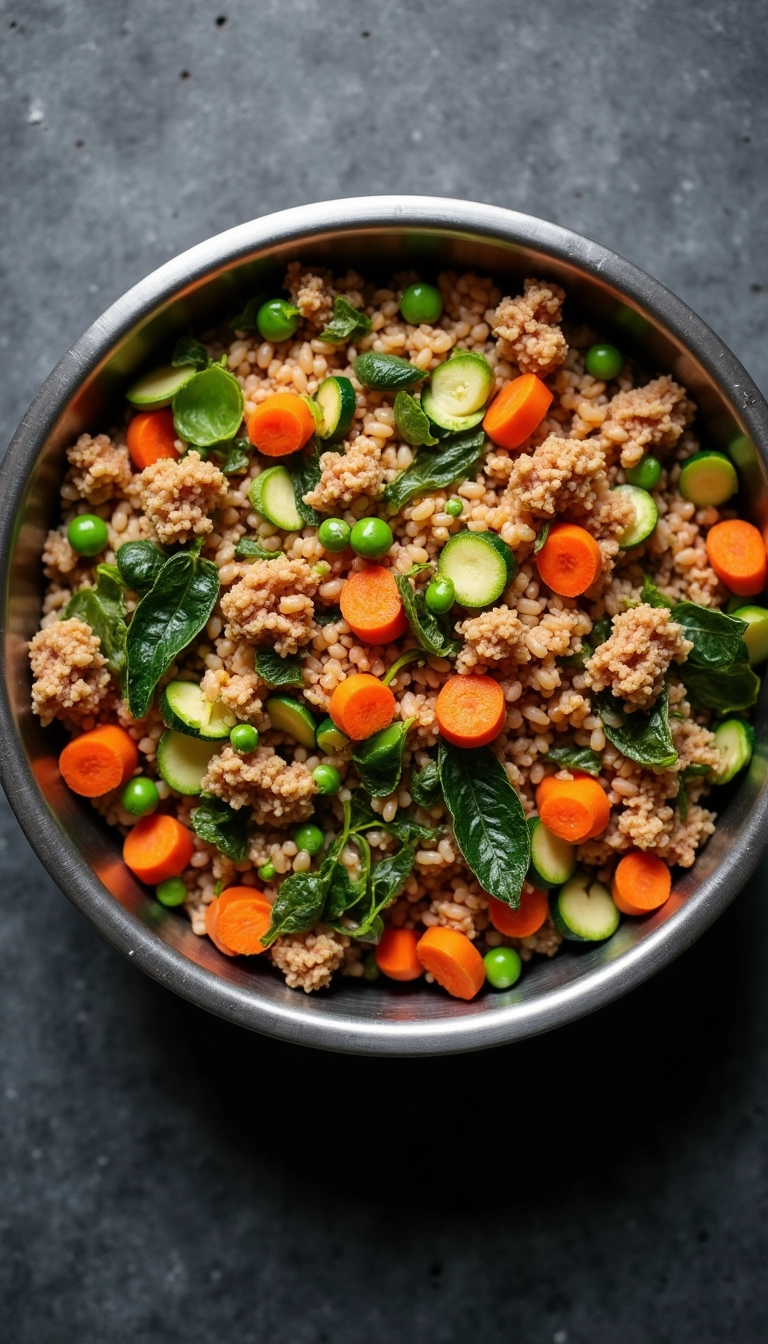Looking for a homemade food for dogs with skin allergies that actually works? You’re in the right place! As a dedicated pet parent who’s researched countless healthy dog food recipes, I’m excited to share this game-changing homemade dog food recipe that’s helping pups with itchy skin find relief. Studies show that nearly 10% of dogs suffer from food-related skin allergies, making traditional dog food recipes challenging for many pet owners. This best homemade dog food recipe features a gentle, nutritious fish stew that’s been transforming the lives of dogs with sensitive skin. Using simple ingredients like cod and green vegetables, this healthy homemade dog food is designed to nourish your pup while avoiding common allergens, helping them feel better from the inside out!
Note: While this recipe has helped many dogs, remember to consult with your veterinarian before transitioning to any new homemade dog food recipes, as they can help customize portions and ingredients based on your pet’s specific needs.

Homemade Dog Food for Skin Allergies: Soothing Fish Stew
Description
Transform your dog's health with this nourishing homemade dog food recipe. Our simple, healthy dog food recipe combines lean cod with gentle vegetables and coconut oil, creating the perfect meal for dogs with itchy skin and sensitivities.
Ingredients
Instructions
-
Carefully debone cod if needed (5 minutes)
-
Dice potatoes into small, uniform pieces (5 minutes)
-
Chop green beans into dog-friendly sizes (5 minutes)
-
Measure remaining ingredients for your healthy dog food recipe
-
Combine cod filets, diced potatoes, green beans, green peas, and water in a large pot
-
Bring to a boil over high heat (about 5 minutes)
-
Reduce heat to medium-low and simmer for 15 minutes, or until fish flakes easily and vegetables are tender
-
Stir in coconut oil until melted and well combined
-
Cool completely before serving
-
Feed approximately 1 cup of this homemade dog food per 25 pounds of your dog's body weight daily, divided into 2-3 meals. Adjust portions based on your dog's activity level, age, and overall health needs.
-
Store unused portions in airtight containers in the refrigerator for up to 3 days, or freeze for up to 3 months. When freezing, divide into individual portions for easier thawing.



